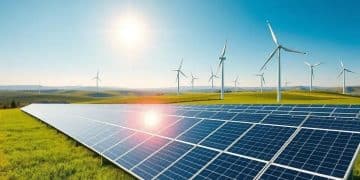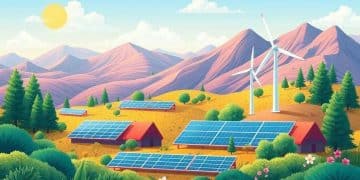Clean energy projects USA trends to watch in 2024
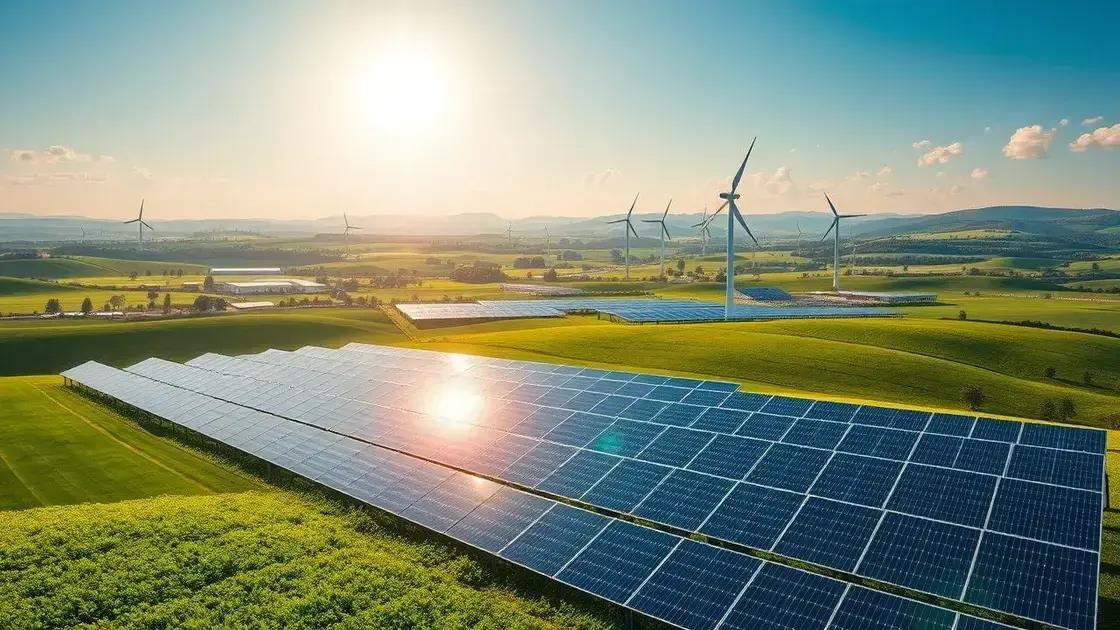
Clean energy projects in the USA focus on innovative technologies and supportive policies to enhance sustainability, reduce emissions, and drive investment in renewable energy sources.
Clean energy projects USA trends are rapidly evolving, and their impact is poised to reshape our energy landscape. Curious about what’s in store? Let’s delve into the latest developments and future prospects.
Current clean energy initiatives in the USA
The landscape of clean energy initiatives in the USA is changing rapidly, and it’s essential to understand what is currently happening. Numerous projects are underway that aim to foster sustainability and reduce carbon footprints across various states.
Federal and State Programs
Many federal initiatives are leading the charge in the clean energy sector. For instance, government-funded programs focus on enhancing renewable energy adoption, such as solar and wind.
- Tax credits for residential solar installations
- Incentives for electric vehicle (EV) charging stations
- Grants for energy efficiency upgrades
State-level campaigns further support these efforts. States like California and Texas are implementing robust policies to increase clean energy production and consumption. This is vital not only for improving air quality but also for boosting job creation in green technologies.
Innovative Projects
Across the country, innovative clean energy projects are gaining traction. Cities are investing in solar energy, wind farms, and energy storage solutions to meet their energy needs sustainably. For example, New York City has committed to using 100% renewable energy by 2040, which is steering local initiatives and partnerships.
In addition to solar and wind, the focus on energy efficiency is crucial. Many buildings are being retrofitted to use less power while providing the same level of comfort. This includes installing energy-efficient appliances, improved insulation, and smart technology.
Key trends driving clean energy advancements
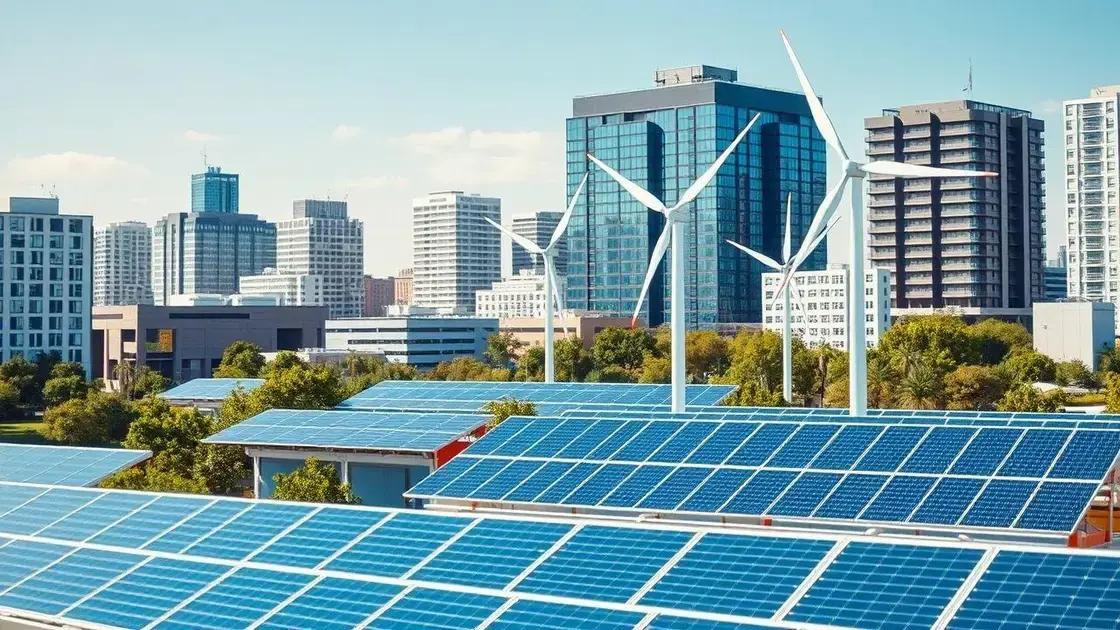
A strong focus on key trends driving clean energy advancements is reshaping how we approach energy production and consumption. With innovations emerging rapidly, it’s important to identify what is shaping the future.
Technological Innovations
One of the most significant trends is the rapid advancement in technology. New methods improve the efficiency of renewable energy sources. For example, more efficient solar panels and wind turbines are now available, making renewable options more viable than ever.
- Improvements in energy storage solutions
- Development of smart grid technology
- Emergence of electric vehicles (EVs)
The rise of energy storage technology is crucial. It allows for the effective use of renewable energy by storing excess energy for later use. This technology addresses one of the biggest challenges in adopting renewable sources.
Policy and Regulation Changes
Another important factor is the shift in policy and regulations that support clean energy projects. Government incentives, such as tax credits and grants, encourage individuals and businesses to adopt renewable technologies.
Many states are setting ambitious goals for reducing carbon emissions. These policies create a favorable environment for clean energy investments and advancements, pushing companies to innovate and reduce operational costs.
The global push towards sustainability is fostering international cooperation. Countries collaborate on projects and share technologies that can accelerate the adoption of clean energy.
Impact of policy changes on clean energy projects
The impact of policy changes on clean energy projects is significant and far-reaching. As governments introduce new regulations and incentives, these changes can determine the success and growth of clean energy initiatives.
Government Incentives and Support
One of the main drivers is the support for renewable energy through government incentives. Tax credits, rebates, and grants stimulate investment in solar, wind, and other clean technologies. These financial incentives encourage businesses and homeowners to transition to renewable energy sources.
- Investment tax credits for solar installations
- Rebates for energy-efficient appliances
- Funding for electric vehicle infrastructure
Moreover, states often establish their own programs to support clean energy adoption. This includes renewable portfolio standards, mandating utilities to acquire a certain percentage of their energy from renewable sources.
Regulatory Framework and Compliance
The regulatory framework surrounding clean energy projects can also create barriers or opportunities. Stricter environmental regulations push industries toward cleaner practices, while deregulation can lead to uncertainty in energy markets.
In recent years, many states have rolled back some regulations, aiming to make it easier to start clean energy projects. This shift can result in increased competition and innovation in the market. Additionally, the rollback can lead to a rush in new installations, contributing to the rapid growth of the clean energy sector.
Ultimately, the balance between regulation and support shapes the overall landscape for clean energy projects. As countries worldwide push toward sustainability, understanding these policies becomes crucial for stakeholders and investors alike.
Future outlook for clean energy technologies
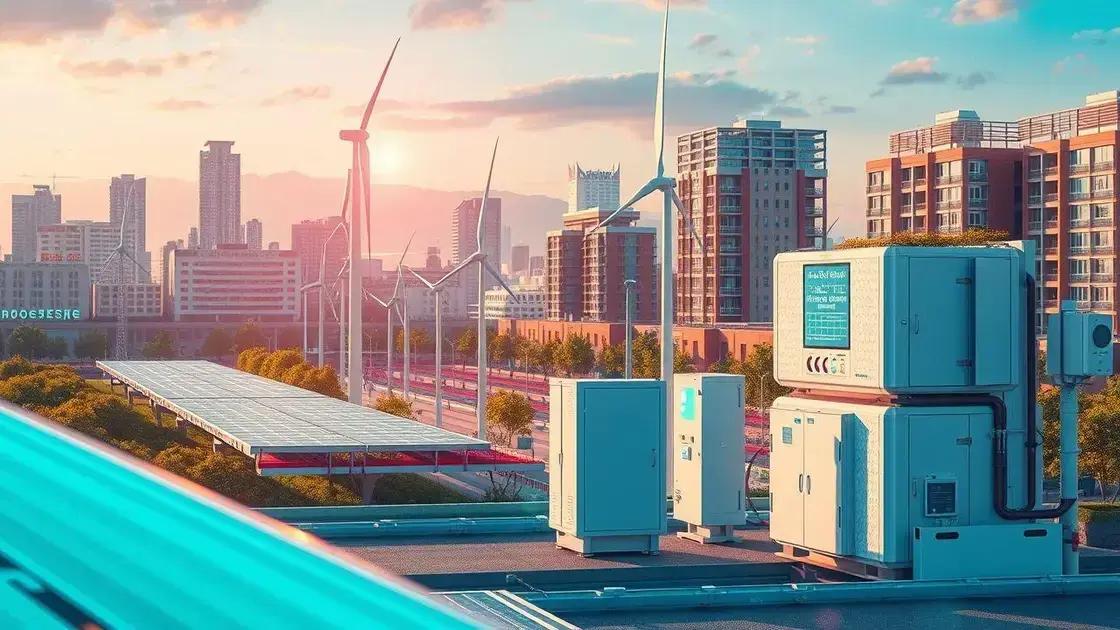
The future outlook for clean energy technologies is bright and full of potential. As the world shifts towards more sustainable practices, the demand for innovative solutions will only grow.
Emerging Technologies
New technologies are continually being developed to enhance the efficiency and effectiveness of clean energy sources. For example, advancements in solar energy include higher-efficiency panels and new materials that capture sunlight more effectively.
- Increased efficiency in solar panels
- Breakthroughs in wind turbine design
- Expansion of geothermal energy applications
Battery storage technology is also making significant strides. This technology plays a crucial role in balancing supply and demand. As battery storage becomes cheaper and more accessible, it will enable greater use of renewable energy.
Market Trends and Investment
Investment in clean energy is surging. Private companies and governments are collaborating more than ever, leading to major funding for new projects. This collaboration drives innovation and the adoption of clean energy.
Trends indicate a strong movement towards decentralized energy systems. Communities are looking to install local renewable energy sources, such as solar panels on homes and businesses. This strategy not only promotes sustainability but also enhances energy security.
Moreover, the integration of smart technologies into energy systems is on the rise. Smart grids and energy management systems allow for optimized energy use, making clean energy more reliable and efficient.
FAQ – Frequently Asked Questions About Clean Energy Projects
What are the main benefits of clean energy projects?
Clean energy projects help reduce greenhouse gas emissions, promote sustainability, and provide reliable energy sources for communities.
How do government policies impact clean energy initiatives?
Government policies provide incentives and regulations that can either support or hinder clean energy projects, making their impact significant.
What are some innovative technologies in clean energy?
Innovative technologies include advanced solar panels, improved wind turbines, and last-generation energy storage systems that enhance efficiency.
How can individuals support clean energy efforts?
Individuals can support clean energy by using renewable sources at home, advocating for supportive policies, and reducing energy consumption.
